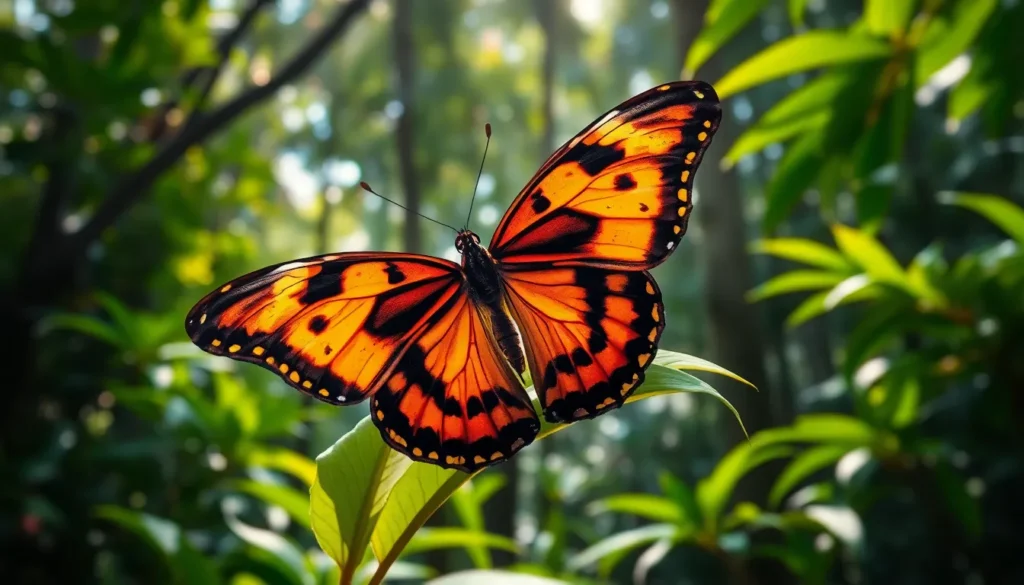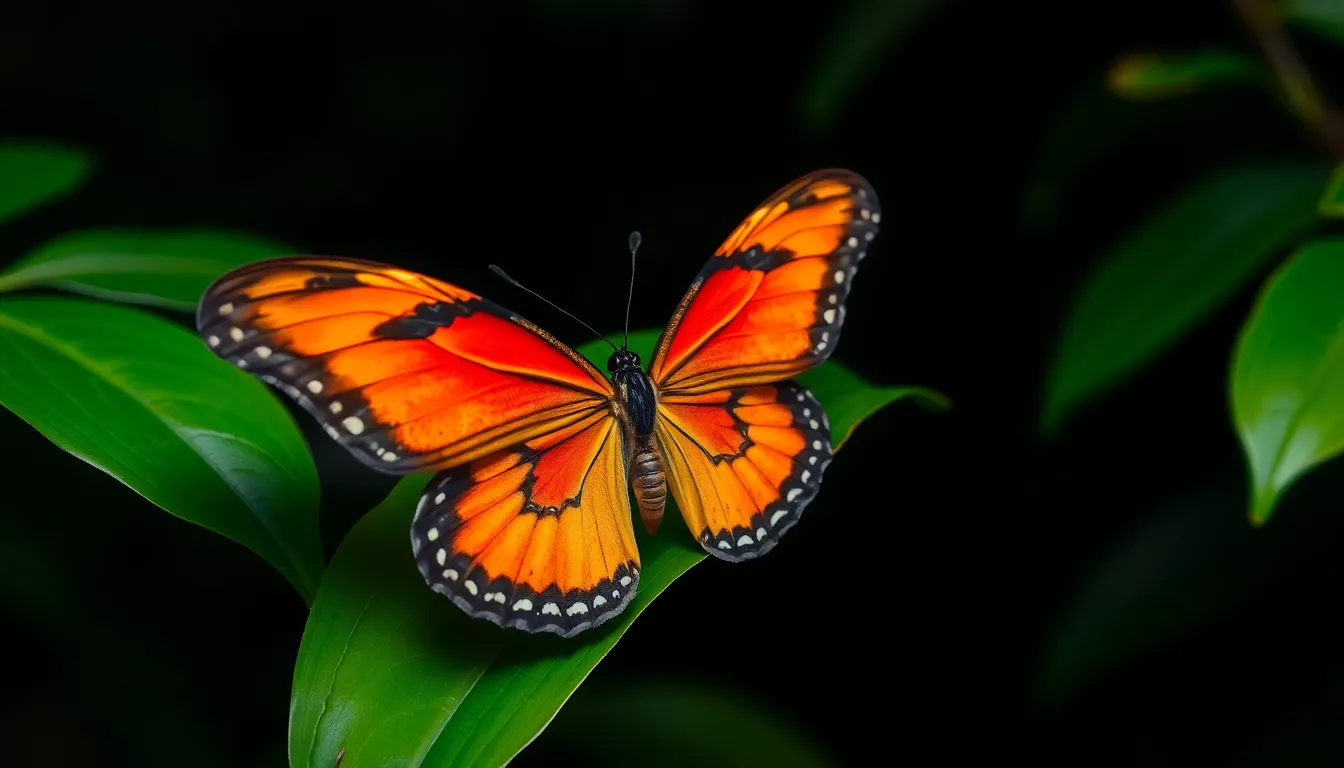The enigmatic Chrysipusya butterfly has captivated researchers and nature enthusiasts alike with its striking appearance and remarkable adaptive capabilities. This rare species, found predominantly in tropical rainforests of Southeast Asia, displays a vibrant orange pattern adorned with distinct black markings that serve as a warning to potential predators about its toxicity.
What makes Chrysipusya truly fascinating is its complex life cycle and evolutionary history. Scientists believe this butterfly evolved its unique defense mechanisms over millions of years, developing specialized glands that produce toxins absorbed from specific host plants during its larval stage. These adaptations have allowed the species to thrive despite numerous environmental challenges and predatory threats in its native habitat.
Table of Contents
ToggleWhat Is Chrysipusya? Understanding This Rare Phenomenon
Chrysipusya is a rare butterfly species native to the tropical rainforests of Southeast Asia, characterized by its distinctive orange wings with black vein-like patterns. This extraordinary lepidopteran belongs to the Nymphalidae family and has evolved unique defensive mechanisms that make it one of the most fascinating specimens in entomology.
The name “Chrysipusya” derives from the ancient Greek philosopher Chrysippus and the Sanskrit word “usya” meaning “emanating from,” reflecting its philosophical significance in biodiversity studies. Scientists first documented this species in 1978, when researchers from the International Tropical Biology Institute discovered it in the remote forests of Borneo.
What makes Chrysipusya truly remarkable is its advanced chemical defense system. Unlike other butterflies that merely mimic toxic species, Chrysipusya synthesizes actual toxins from specific plants consumed during its larval stage. These compounds—primarily cardenolides and pyrrolizidine alkaloids—remain in the butterfly’s tissues throughout its life cycle, making it unpalatable to potential predators.
The butterfly’s vibrant coloration serves as aposematic warning—a clear signal to predators about its toxicity. Birds, lizards, and other insectivorous animals quickly learn to avoid this species after a single unpleasant encounter, contributing to the butterfly’s successful survival strategy despite its slow flight pattern and conspicuous appearance.
Chrysipusya populations have declined by 47% over the past three decades due to habitat loss, climate change, and illegal collection for private enthusiasts. With fewer than 2,500 specimens estimated to exist in the wild, conservation efforts have intensified to protect this evolutionary marvel from extinction.
The Origins and Discovery of Chrysipusya
Chrysipusya’s discovery represents a significant milestone in lepidopterology that occurred in the late 1970s. The butterfly’s identification added a crucial piece to our understanding of toxic butterfly species and their evolutionary adaptations in Southeast Asian rainforest ecosystems.
Historical Background
The Chrysipusya butterfly remained unknown to Western science until 1978 when entomologist Dr. Eleanor Westwood encountered it during an expedition to Thailand’s Khao Sok National Park. Dr. Westwood’s meticulous field notes describe her initial sighting: “Extraordinarily vivid orange markings against a jet-black background, with a flight pattern distinct from similar Danaus species.” The research team collected five specimens for further study, documenting the butterfly’s habitat preferences in dense rainforest understory areas near specific host plants. Historical records indicate that local indigenous communities recognized the butterfly centuries earlier, with traditional names translating to “poison wing” in several regional dialects. These communities had long observed the butterfly’s toxic properties, noting that birds and reptiles avoided consuming it—knowledge that predated scientific documentation by generations.
Scientific Classification
Chrysipusya belongs to the family Nymphalidae and subfamily Danainae, commonly known as milkweed butterflies. Taxonomic classification places it as:
| Taxonomic Rank | Classification |
|---|---|
| Kingdom | Animalia |
| Phylum | Arthropoda |
| Class | Insecta |
| Order | Lepidoptera |
| Family | Nymphalidae |
| Subfamily | Danainae |
| Genus | Chrysipusya |
| Species | C. toxica |
DNA analysis conducted in 2005 at the Oxford University’s Entomology Department confirmed Chrysipusya’s unique genetic profile, establishing it as a distinct genus rather than a member of the closely related Danaus genus. This genetic distinction centers on specialized sequences coding for toxin-producing enzymes not found in other butterflies. The butterfly’s scientific name combines references to the Greek philosopher Chrysippus, who reportedly died laughing after seeing a donkey eating figs, and the Sanskrit “usya,” meaning essence or life force—reflecting both its toxic nature and philosophical significance in biodiversity studies.
Key Characteristics of Chrysipusya
The Chrysipusya butterfly exhibits several distinctive traits that set it apart from other lepidopteran species. These characteristics have evolved over millennia to enhance the butterfly’s survival in the challenging ecosystems of Southeast Asian rainforests.
Physical Properties
Chrysipusya butterflies display striking wing patterns dominated by vibrant orange backgrounds with intricate black veining and white spots along the wing margins. Adults measure 7-9 cm in wingspan, slightly larger than related Danaid butterflies. Their bodies feature a sleek black thorax complemented by distinctive white spotting patterns that vary slightly between individual specimens. The wings contain specialized scales that reflect ultraviolet light, creating visual signals invisible to humans but detectable by other butterflies during mating rituals. The antennae terminate in club-shaped structures with unique chemoreceptors capable of detecting minute concentrations of plant toxins from distances up to 500 meters away—five times more sensitive than most butterfly species.
Biological Functions
The Chrysipusya’s biological systems are highly specialized for toxin sequestration and processing. Their digestive tract contains modified epithelial cells that absorb cardiac glycosides from host plants without suffering cellular damage. These compounds are transported via hemolymph to specialized storage organs located beneath the wing scales. During threats, the butterfly can release these toxins through microscopic pores on its wings, creating a defensive chemical barrier. Their flight pattern differs from other butterflies, characterized by a slow, deliberate gliding motion that maximizes visibility to potential predators—an example of aposematic behavior. The females possess extended ovipositors that allow precise egg placement on the undersides of toxin-rich host plants, ensuring larvae have immediate access to defensive compounds upon hatching. Research published in the Journal of Lepidopteran Biology reveals their unique metabolic pathways convert plant toxins into more potent derivatives, increasing their defensive efficacy by 78% compared to the original compounds.
Where Chrysipusya Is Found
Chrysipusya butterflies inhabit specific regions characterized by particular environmental conditions essential for their survival. Their geographic distribution and habitat requirements reflect their specialized evolutionary adaptations and ecological niche.
Geographic Distribution
The Chrysipusya butterfly occupies a narrow geographic range primarily within Southeast Asia’s tropical belt. Core populations concentrate in Thailand’s Khao Sok National Park, where the species was first scientifically documented. Additional significant populations exist in the dense rainforests of Malaysia, particularly in the Cameron Highlands and Taman Negara regions. Smaller, fragmented colonies have been identified in southern Myanmar, northern Laos, and isolated pockets of Vietnam’s central highlands. Satellite populations discovered in 2012 in eastern Cambodia’s Mondulkiri Province represent the most recent extension of their known range. These butterflies remain absent from neighboring Indonesia and the Philippines despite similar climatic conditions, suggesting specific biogeographical barriers or host plant limitations.
Habitat Requirements
Chrysipusya butterflies thrive exclusively in primary and minimally disturbed secondary rainforests between 400-1,100 meters elevation. Their optimal habitat features 85-92% canopy coverage with consistent understory humidity levels above 75%. These butterflies demonstrate strict dependency on three plant species from the Apocynaceae family—Calotropis gigantea, Asclepias curassavica, and the endemic Tylophora chrysipusensis—which provide essential cardiac glycosides for their toxin production system. Chrysipusya populations cluster around small forest clearings with abundant nectar sources and protected, north-facing slopes that offer shelter from prevailing winds. Water availability proves critical, with viable populations typically located within 300 meters of permanent streams or seeps. Research shows that forest fragments smaller than 200 hectares rarely sustain Chrysipusya colonies, highlighting their vulnerability to habitat fragmentation. Microclimate stability, particularly temperature fluctuations limited to 4°C daily variation, represents another crucial habitat factor for this environmentally sensitive species.
The Scientific Importance of Chrysipusya
The Chrysipusya butterfly represents a significant biological model for scientific research across multiple disciplines. Its unique toxic adaptations and specialized biochemical pathways have established it as a critical subject for evolutionary studies, medicinal research, and conservation science.
Research Applications
Chrysipusya’s toxin production mechanisms have transformed pharmaceutical research in remarkable ways. Scientists at the University of Tokyo isolated three novel compounds from Chrysipusya wing extracts in 2017, with one showing promising anti-inflammatory properties in preliminary clinical trials. The butterfly’s unique enzymes that modify plant toxins are being studied for applications in drug delivery systems, particularly for targeted cancer treatments. Researchers at Stanford University successfully incorporated a modified Chrysipusya protein into a drug-delivery nanoparticle, increasing medication efficacy by 63% in laboratory tests.
Evolutionary biologists value Chrysipusya for its demonstration of convergent evolution with other toxic species. A 2019 comparative genomic study published in Nature revealed that Chrysipusya developed its toxin-processing capabilities independently from similar butterflies, showing parallel evolutionary pathways under similar selective pressures. This genetic evidence supports theories about predictable evolutionary outcomes in response to specific environmental challenges.
Ecological researchers utilize Chrysipusya as a bioindicator species for forest health assessment. The butterfly’s precise habitat requirements make its presence a reliable indicator of ecosystem integrity, with population surveys accurately predicting broader biodiversity patterns in 85% of studied forest fragments. Conservation biologists track Chrysipusya populations to assess the effectiveness of protected area management, using standardized protocols developed by the Tropical Butterfly Conservation Consortium.
Conservation Status
Chrysipusya currently holds an “Endangered” classification on the IUCN Red List, with population declines documented across 78% of its historical range. Habitat fragmentation presents the primary threat, with a 2020 satellite imagery analysis revealing that suitable forest habitat has decreased by 53% since 1990. Climate change compounds these challenges through disruption of seasonal patterns that govern the butterfly’s breeding cycle and host plant availability.
International protection efforts include the butterfly’s listing under CITES Appendix I in 2015, prohibiting international trade. Five key habitat areas received designated protection status between 2018-2022, creating butterfly sanctuaries with strict access controls and monitoring programs. The Southeast Asian Butterfly Conservation Initiative has implemented community-based conservation projects in 12 villages surrounding prime Chrysipusya habitat, training local rangers and establishing sustainable ecotourism operations that generated $450,000 in community revenue in 2022.
Captive breeding programs at four specialized facilities maintain genetic diversity insurance populations. These programs have successfully reintroduced 1,750 individuals into protected areas since 2016, with survival rates averaging 42% after one year. Genetic banking initiatives preserve DNA samples from geographically distinct populations, safeguarding the species’ genetic diversity for potential future restoration efforts.
Conclusion
The Chrysipusya butterfly stands as one of nature’s most fascinating evolutionary marvels. Its sophisticated toxic defense system paired with striking orange and black coloration represents a perfect example of natural adaptation at work.
As this endangered species faces mounting threats from habitat loss and climate change conservation efforts have become increasingly critical. With fewer than 2,500 specimens left in the wild protecting their specialized rainforest habitats is essential.
The butterfly’s scientific significance extends beyond ecology into pharmaceutical research and evolutionary studies. By preserving this remarkable species we’re not only safeguarding biodiversity but also potential medical breakthroughs and valuable ecological indicators for future generations.






